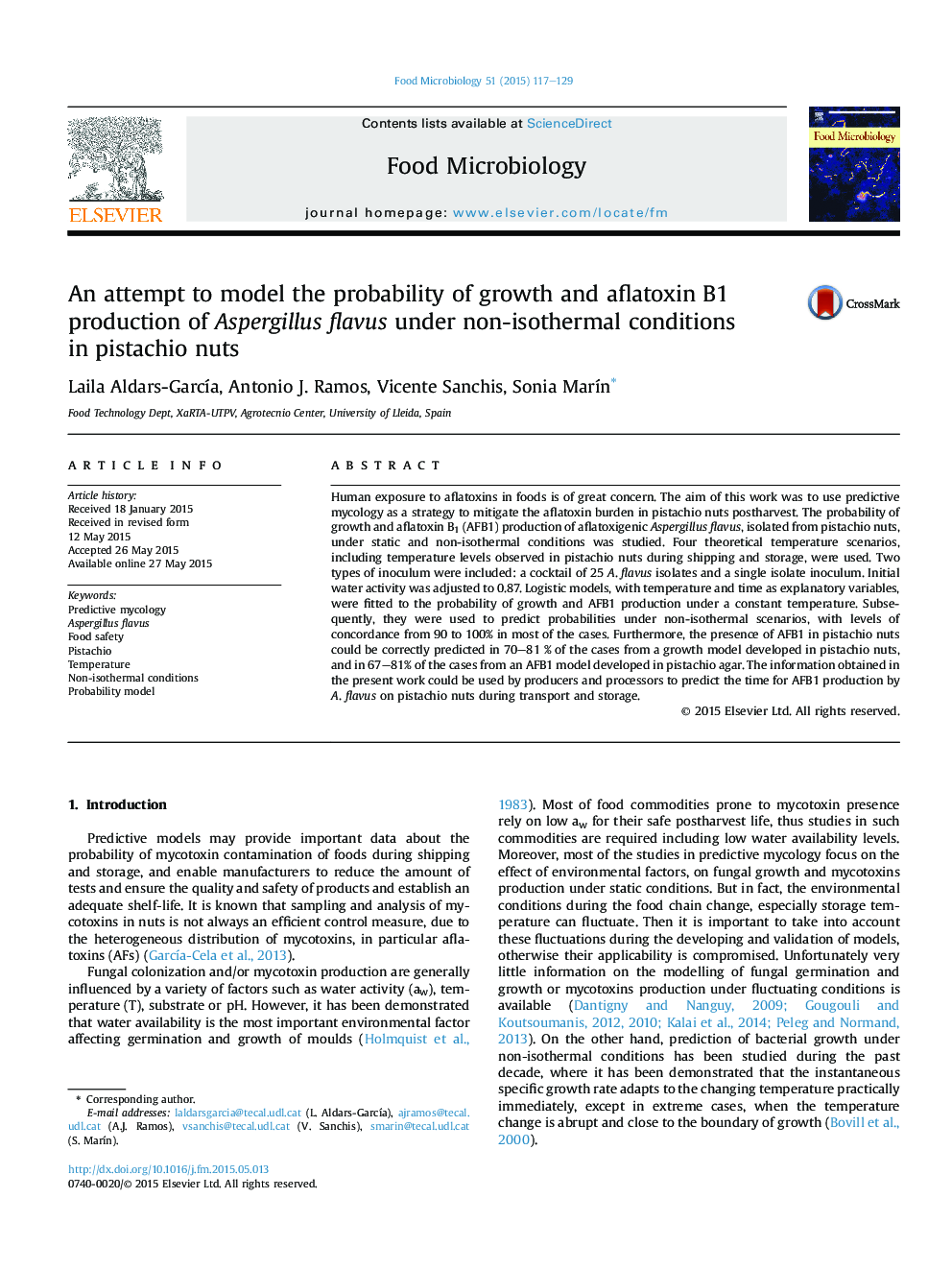| Article ID | Journal | Published Year | Pages | File Type |
|---|---|---|---|---|
| 6288494 | Food Microbiology | 2015 | 13 Pages |
Abstract
Human exposure to aflatoxins in foods is of great concern. The aim of this work was to use predictive mycology as a strategy to mitigate the aflatoxin burden in pistachio nuts postharvest. The probability of growth and aflatoxin B1 (AFB1) production of aflatoxigenic Aspergillus flavus, isolated from pistachio nuts, under static and non-isothermal conditions was studied. Four theoretical temperature scenarios, including temperature levels observed in pistachio nuts during shipping and storage, were used. Two types of inoculum were included: a cocktail of 25 A. flavus isolates and a single isolate inoculum. Initial water activity was adjusted to 0.87. Logistic models, with temperature and time as explanatory variables, were fitted to the probability of growth and AFB1 production under a constant temperature. Subsequently, they were used to predict probabilities under non-isothermal scenarios, with levels of concordance from 90 to 100% in most of the cases. Furthermore, the presence of AFB1 in pistachio nuts could be correctly predicted in 70-81 % of the cases from a growth model developed in pistachio nuts, and in 67-81% of the cases from an AFB1 model developed in pistachio agar. The information obtained in the present work could be used by producers and processors to predict the time for AFB1 production by A. flavus on pistachio nuts during transport and storage.
Keywords
Related Topics
Life Sciences
Agricultural and Biological Sciences
Food Science
Authors
Laila Aldars-GarcÃa, Antonio J. Ramos, Vicente Sanchis, Sonia MarÃn,
